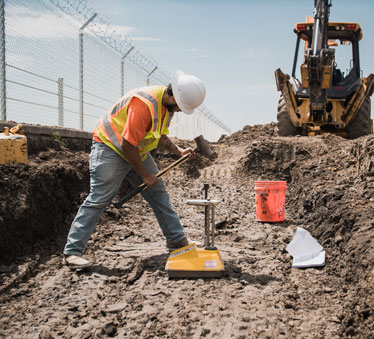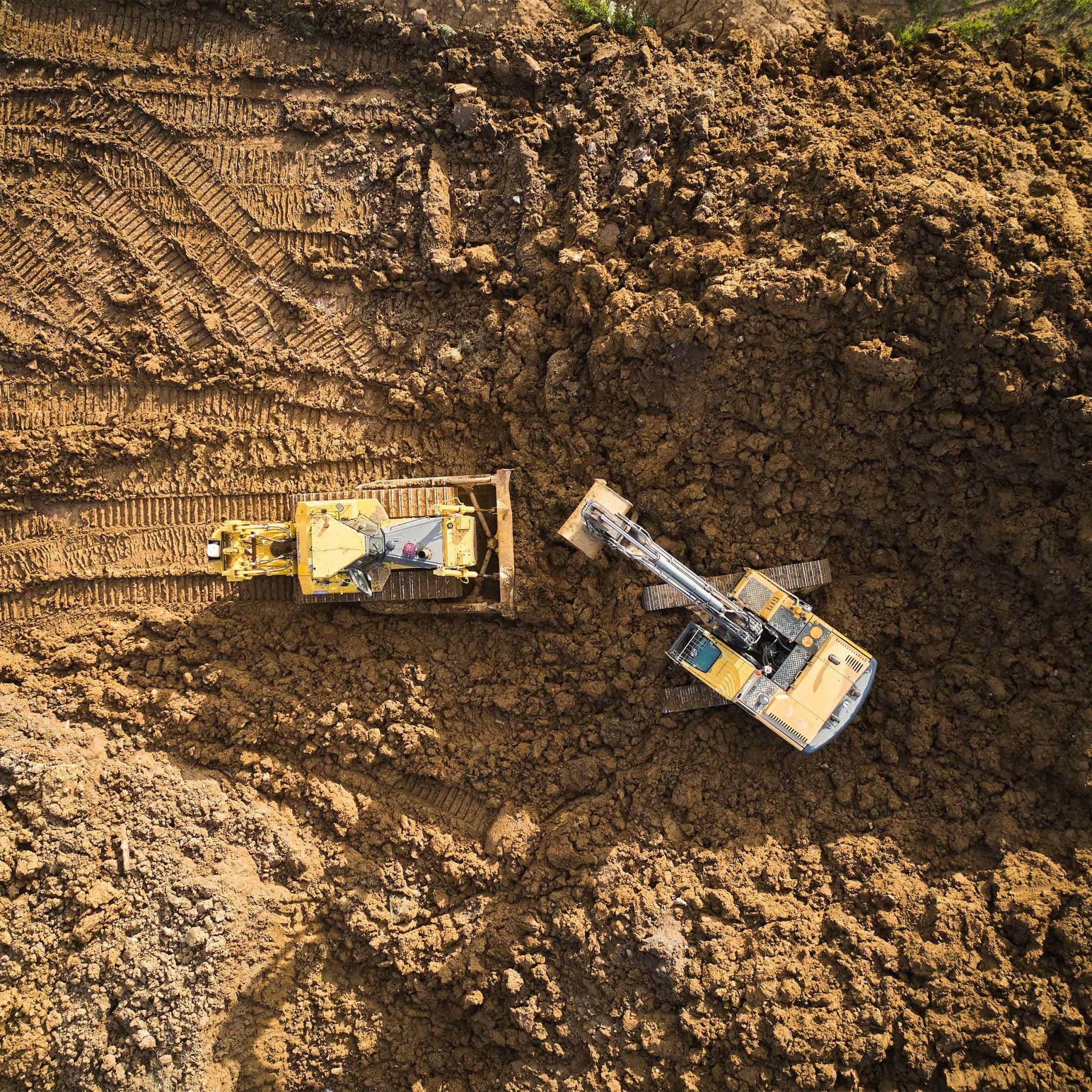Fads Influencing the Future of Geotechnical Eng Practices
Wiki Article
Comprehending the Comprehensive Role of Geotechnical Designers in Ground Investigation and Soil Analysis for Building And Construction Tasks
Geotechnical designers are important to the success of building and construction jobs, supplying vital understandings via extensive ground examinations and dirt analysis. Their proficiency in assessing soil actions and employing advanced testing strategies notifies essential choices that support structural integrity and safety and security. By working together and recognizing prospective risks with multidisciplinary teams, these specialists significantly influence project outcomes, consisting of effectiveness and cost-effectiveness. Nevertheless, the details of their function often extend past these functions, triggering a much deeper expedition right into the methods they utilize and the ramifications of their searchings for on overall project stability.Role of Geotechnical Designers
The pivotal function of geotechnical designers in building and construction tasks can not be overemphasized, as they provide important understandings into dirt habits and website problems. These professionals are tasked with evaluating the suitability of the ground for numerous sorts of structures, ensuring safety and security and security throughout the construction process. Their know-how includes a variety of tasks, consisting of site characterization, soil tasting, and laboratory testing, which are important for establishing the physical and mechanical properties of the dirt.Geotechnical engineers utilize their searchings for to create foundational layouts that suit load-bearing demands and minimize threats related to dirt slope, settlement, and liquefaction security. They play a vital function in identifying possible threats, such as groundwater changes and contamination, which can substantially influence project viability. They team up with architects, civil engineers, and professionals to make sure that geotechnical factors to consider are integrated right into the total layout and building and construction phases.
Ground Investigation Strategies
Ground examination strategies create the backbone of geotechnical design, making it possible for engineers to obtain a comprehensive understanding of subsurface problems. These strategies are important for examining dirt buildings, identifying groundwater degrees, and recognizing possible geological threats.Usual approaches consist of borehole boring, which enables the removal of soil examples at different midsts, offering crucial data for evaluation. Furthermore, in situ screening methods, such as Common Penetration Tests (SPT) and Cone Penetration Tests (CPT), are used to review soil stamina and thickness straight in the ground.
Geophysical methods also play a substantial duty in ground investigations. Techniques such as seismic surveys and electrical resistivity tomography aid analyze subsurface qualities without extensive excavation. civil consulting engineers. These non-invasive approaches are especially beneficial in big or sensitive areas where disturbance have to be reduced
In addition, exploratory trenches can be dug deep into to aesthetically examine dirt layers and identify any kind of abnormalities. Each of these strategies contributes unique understandings, enabling geotechnical designers to develop exact site assessments and educate layout choices. In recap, a mix of these ground examination strategies is important for effective building and construction jobs, ensuring security and architectural honesty.
Soil Evaluation Methods
Dirt analysis approaches are crucial for understanding the physical and chemical buildings of dirt, which directly influence the design and construction of foundations and other frameworks. Numerous techniques are utilized to evaluate dirt characteristics, ensuring that geotechnical engineers obtain exact data for notified decision-making.One commonly utilized technique is grain size evaluation, which determines the distribution of particle sizes within a soil example. This is vital for categorizing dirt types and forecasting their habits under load. Another important technique is Atterberg limits testing, which reviews the plasticity and dampness web content of fine-grained dirts, providing understandings right into their engineering residential properties.

Field tests, such as Typical Penetration Examinations (SPT) and Cone Penetration Tests (CPT), deal useful in-situ information concerning soil strength and stratification. Jointly, these dirt evaluation approaches create the structure of geotechnical examination, allowing designers to create risk-free and effective frameworks tailored to the specific problems of the site.
Risk Mitigation Methods
Applying efficient risk reduction methods is important for geotechnical engineers to attend to potential difficulties in building and construction projects. These methods are critical in recognizing, analyzing, and managing threats related to dirt problems, site stability, and groundwater fluctuations, which can adversely affect project end results.One key strategy involves carrying out thorough site examinations that use sophisticated geophysical techniques and detailed dirt tasting. By getting precise information on subsurface problems, engineers can make enlightened choices on layout and building methods. Furthermore, using anticipating modeling tools enables the simulation of numerous scenarios, making it possible for designers to predict possible troubles and apply safety nets.
Furthermore, developing clear interaction channels among project stakeholders cultivates a collaborative technique to risk monitoring. Normal updates and assessments ensure that all celebrations know the progressing site problems and can adjust their strategies accordingly.

Influence On Construction Tasks
The efficiency of danger mitigation strategies directly affects the overall success of construction jobs. Geotechnical designers play a pivotal role in this domain, as their proficiency in ground examination and soil analysis informs essential choices throughout the construction procedure. By properly examining dirt problems and recognizing potential hazards, these specialists allow job teams to create reliable solutions that reduce risks related to ground instability, water seepage, and other geotechnical obstacles.The influence of detailed geotechnical evaluation is apparent in various aspects of building jobs, consisting of expense administration, task timelines, and structural stability. Early identification of concerns permits for prompt treatments, decreasing pricey delays and budget overruns. An extensive understanding of website problems boosts the layout and engineering process, making sure that structures are built to stand up to ecological pressures and prospective natural disasters.
Inevitably, the contributions of geotechnical engineers are important to the civil consulting engineers effective execution of building and construction projects. Their work not only fosters safety and security and conformity with policies but additionally enhances the long-lasting sustainability of structures, making certain that they carry out effectively throughout their intended life-span. The cooperation between geotechnical groups and other stakeholders is vital for achieving ideal outcomes in construction undertakings.
Verdict
To conclude, geotechnical designers perform a crucial feature in building jobs via detailed ground investigations and soil evaluations. Their competence in examining soil habits, employing different investigation methods, and implementing risk reduction methods dramatically adds to the structural honesty and safety and security of built environments. By teaming up with multidisciplinary teams, these professionals improve project efficiency and guarantee conformity with safety and security criteria, eventually resulting in successful building and construction end results and lowered prospective threats.Geotechnical designers are indispensable to the success of construction projects, providing vital understandings with thorough ground investigations and dirt analysis.The critical duty of geotechnical designers in building and construction projects can not be overemphasized, as they offer crucial understandings into dirt habits and site problems. Their know-how incorporates a large variety of activities, consisting of site characterization, soil sampling, and laboratory screening, which are important for figuring out the physical and mechanical buildings of the dirt.
By accurately evaluating soil problems and determining potential risks, these professionals enable task groups to create efficient remedies that reduce threats linked with ground instability, water infiltration, and various other geotechnical difficulties.
In conclusion, geotechnical designers do a vital feature in construction tasks via detailed ground investigations and soil evaluations.
Report this wiki page